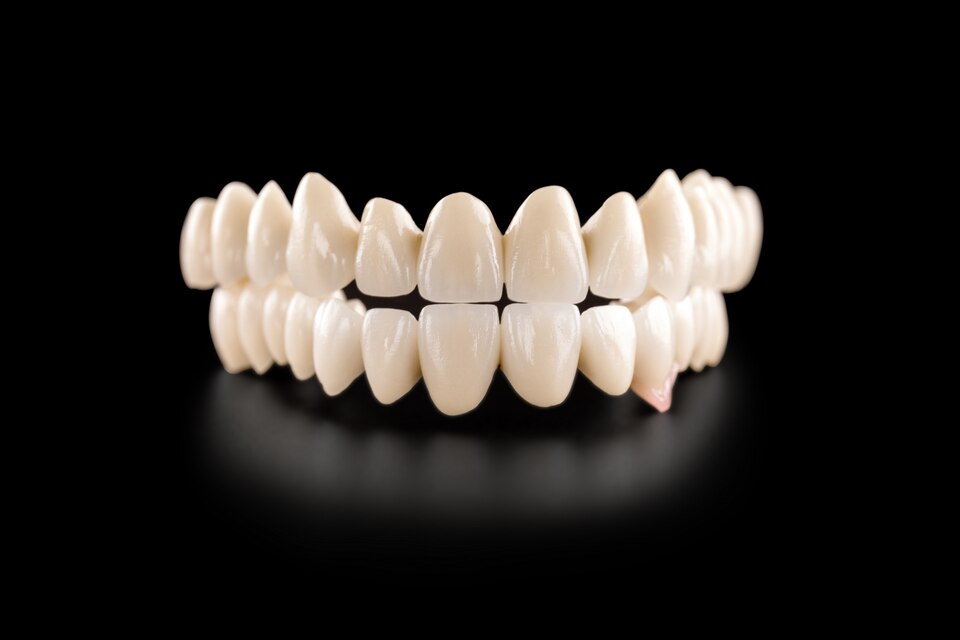Dental Crowns
Dental crowns cover damaged or cracked teeth to restore their size, shape, function and aesthetics.

What Are Dental Crowns?
Dental crowns, often referred to as “tooth caps,” are common dental restorations designed to encase a damaged or weakened tooth. They serve a vital role in dentistry by enhancing tooth strength, functionality, and aesthetics. In this article, we will explore the purpose and benefits of dental crowns, the various types available, the crown placement procedure, and answer frequently asked questions about these dental marvels.
Purpose and Benefits of Dental Crowns
Dental crowns offer an array of advantages, making them a versatile solution for various dental issues:
Strengthening and Protecting Weakened Teeth
One of the primary purposes of dental crowns is to reinforce weakened teeth. Teeth that have been significantly damaged by decay, fractures, or large fillings can be prone to further harm. Crowns encase these vulnerable teeth, preventing further deterioration and potential tooth loss.
Restoring Large Fillings
When a tooth has a large filling relative to its size, it can become fragile over time. Dental crowns provide crucial support to such teeth, preventing fractures and ensuring their long-term viability.
Improving the Appearance of Teeth
Crowns are not just functional; they also enhance the aesthetics of teeth. They can conceal severe discoloration, irregular shapes, or misalignment issues, delivering a natural and appealing appearance.
Covering Dental Implants
Dental implants, while effective in replacing missing teeth, require a visible portion known as the prosthetic crown. This crown not only fills the gap but also matches the color and shape of neighboring teeth, ensuring a seamless smile.
Supporting Dental Bridges
Crowns play a pivotal role in dental bridges. They serve as anchors on either side of the gap, securing the artificial tooth or teeth in place and restoring proper dental function.

Types of Dental Crowns
Dental crowns come in various materials, each with its unique advantages:
Porcelain Crowns
Porcelain crowns are prized for their natural appearance, closely resembling natural teeth in color and translucency. They are an excellent choice for restoring front teeth and achieving a lifelike smile.
Ceramic Crowns
Ceramic crowns share similarities with porcelain crowns in terms of aesthetics. They are durable, biocompatible, and suitable for those with metal allergies.
Metal Alloy Crowns
Metal alloy crowns, including gold and nickel-chromium crowns, are known for their exceptional strength and longevity. They are often used for molars, where durability is crucial.
Zirconia Crowns
Zirconia crowns combine strength and aesthetics. They are highly durable and can withstand the forces of chewing while maintaining a natural appearance.
Dental Crown Procedure
The process of getting a dental crown typically involves the following steps:
Examination and Evaluation
Your dentist will assess the damaged tooth’s condition, take X-rays, and determine if a crown is the best solution. They will discuss the treatment plan and answer any questions you may have.
Tooth Preparation
Before placing the crown, the tooth must be prepared. This involves removing any decay or damaged tissue and reshaping the tooth to accommodate the crown.
Impression and Temporary Crown
An impression of the prepared tooth is taken to create a custom-fitted crown. While waiting for the permanent crown to be fabricated, a temporary crown is placed to protect the tooth.
Crown Placement
Once the permanent crown is ready, it is carefully placed and bonded to the prepared tooth. Your dentist ensures that it fits perfectly and aligns with your bite.
Final Adjustments
Any necessary adjustments to the crown’s fit and bite are made to ensure your comfort and functionality.
FAQ
Dental crowns can last anywhere from 10 to 30 years, depending on factors such as material, oral hygiene, and wear and tear.
A dental crown encapsulates a damaged tooth to restore its size, shape, function, and strength. It protects vulnerable parts of the tooth and improves aesthetics.
The two main types of crowns are porcelain crowns, which resemble natural teeth, and metal alloy crowns made from gold, metal alloy, or nickel-chromium. The choice depends on factors like location in the mouth, aesthetics, and durability.